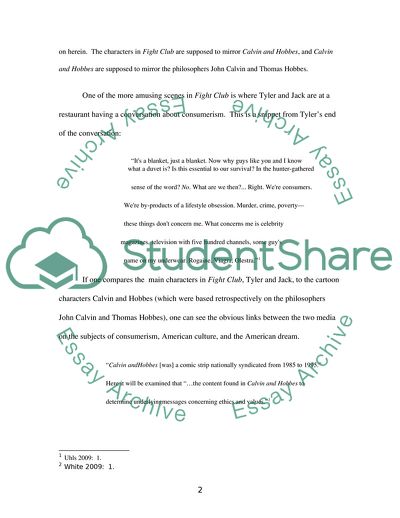Cite this document
(The Characters Tyler and Jack in Fight Club and Calvin and Hobbes the Assignment, n.d.)
The Characters Tyler and Jack in Fight Club and Calvin and Hobbes the Assignment. https://studentshare.org/visual-arts-film-studies/1723193-literary-analysis-of-the-link-between-the-book-fight-club-and-philosophers-thomas-hobbes-and-john-calvin
The Characters Tyler and Jack in Fight Club and Calvin and Hobbes the Assignment. https://studentshare.org/visual-arts-film-studies/1723193-literary-analysis-of-the-link-between-the-book-fight-club-and-philosophers-thomas-hobbes-and-john-calvin
(The Characters Tyler and Jack in Fight Club and Calvin and Hobbes the Assignment)
The Characters Tyler and Jack in Fight Club and Calvin and Hobbes the Assignment. https://studentshare.org/visual-arts-film-studies/1723193-literary-analysis-of-the-link-between-the-book-fight-club-and-philosophers-thomas-hobbes-and-john-calvin.
The Characters Tyler and Jack in Fight Club and Calvin and Hobbes the Assignment. https://studentshare.org/visual-arts-film-studies/1723193-literary-analysis-of-the-link-between-the-book-fight-club-and-philosophers-thomas-hobbes-and-john-calvin.
“The Characters Tyler and Jack in Fight Club and Calvin and Hobbes the Assignment”. https://studentshare.org/visual-arts-film-studies/1723193-literary-analysis-of-the-link-between-the-book-fight-club-and-philosophers-thomas-hobbes-and-john-calvin.


